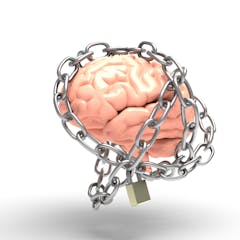
Articles on Anxiety
Displaying 1 - 20 of 587 articles

Having long been considered to have ‘no accepted medical use’, psychedelics are finally being recognised as being beneficial for treating a range of mental health disorders.

Corruption imposes mental health costs on individuals.

The way jobs are structured affects employee mental health, an analysis of more than 18,000 workers shows.

A stressed out and tired brain will be more likely to overthink. Deep thinkers, people who are prone to anxiety or low mood, and those who are feel emotions deeply are also more likely to overthink.

Artificial intelligence helped produce the Beatles’ 2023 hit “Now and Then.” But despite the sophisticated technology, the song reveals our obsession with the past and our anxieties about the future.

Nearly 80% of people have accepted invitations to events they didn’t want to attend.

Australia has among the highest antidepressant prescribing rates in the world.

Lots of people will do a lot to avoid feeling negative emotions. But researchers are figuring out how these unpleasant feelings actually have benefits.

Employers have a duty to address work stressors and make adjustments for workers with long-term illnesses.

Anxiety about ageing is also often a fear of the future.

Oral contraceptives modify the menstrual cycle. What’s less well known is that they also reach the brain, particularly the regions important for regulating emotions.

Schools are operating with already stretched resources. But they are an obvious route to supporting children’s mental health.

While teleworking can come with many benefits, being alone at home can leave us feeling isolated and unmotivated.

Research suggests we should embrace feeling down when ill.

A medical anthropologist explores claims about the health benefits of sound baths and how to choose the one to attend.

Mindfulness, being in the present moment, is often achieved through meditation, the practice of sitting still and focusing on the breath. Both help relieve feelings of anxiety and depression

Perry was being legally prescribed infusions of ketamine.

People who hold higher levels of hope will be less likely to experience symptoms of depression. Shared hopes are also important for expectations of national and international futures.

Embracing hope in the good, alongside recognizing the bad, can reduce eco-anxiety, improve mental health and may just be the key to driving strong and meaningful climate action.

We thought after the worst of a global pandemic, young people’s outlook for the future might have improved. Our survey shows they’ve actually gotten worse.
